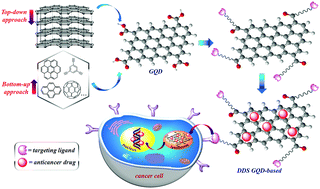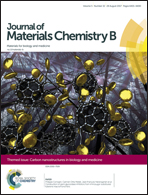Graphene quantum dots: multifunctional nanoplatforms for anticancer therapy
Abstract
Graphene quantum dots, the next generation carbon based nanomaterials, due to their outstanding physical, chemical and biological properties, have shown potential in revolutionizing the future of nanomedicine and biotechnology. Their strong size-dependent photoluminescence (PL) and the presence of reactive groups on the GQD surface, which allow their multimodal conjugation with various functional groups and biologically active molecules, make them ideal candidates for cancer diagnosis and treatment. GQDs have been loaded with drugs and labeled with tumor-targeting ligand units that are able to specifically recognize cancer receptors exposed on the cancer cell surface by generating new therapies that are able to allow a more efficient targeted delivery of anticancer agents while minimizing their distribution in healthy tissues, as well as the development of new imaging agents for the in vitro and in vivo diagnosis of several types of cancer. Here, we review the recent advances in the study of the application of GQDs as nanoplatforms for anticancer therapy, taking into account the methods used for their synthesis and functionalization procedures, which can deeply affect their biocompatibility and their electronic and optical features. The biosafety and toxicity aspects of these nanomaterials at cellular and animal levels, mainly related to their size and the kind and degree of surface functionalization, are also discussed.

- This article is part of the themed collections: Recent Review Articles and Carbon Nanostructures in Biology and Medicine

 Please wait while we load your content...
Please wait while we load your content...